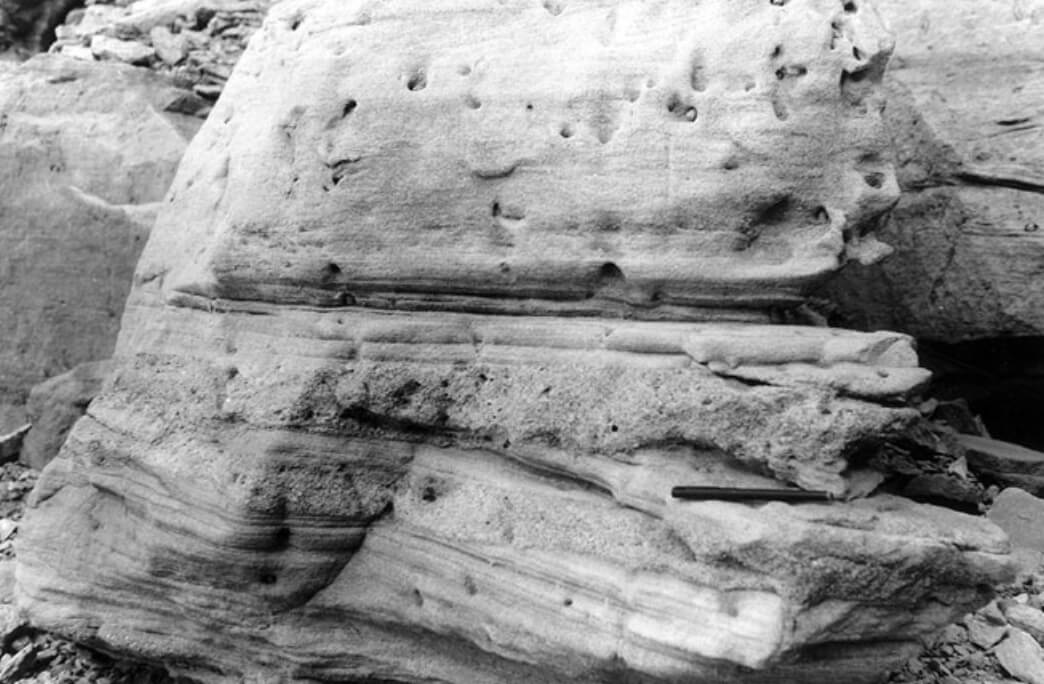
How to Cite
Share
Abstract
The Middle Jurassic Pelion Formation – Fossilbjerget Formation couplet of Jameson Land, East Greenland, is a well-exposed example of the Middle Jurassic inshore–offshore successions characteristic of the rifted seaways in the Northwest European – North Atlantic region. Early Jurassic deposition took place under relatively quiet tectonic conditions following Late Permian – earliest Triassic and Early Triassic rift phases and the Lower Jurassic stratal package shows an overall layer-cake geometry. A long-term extensional phase was initiated in Middle Jurassic (Late Bajocian) time, culminated in the Late Jurassic (Kimmeridgian–Volgian), and petered out in the earliest Cretaceous (Valanginian). The Upper Bajocian – Middle Callovian early-rift succession comprises shallow marine sandstones of the Pelion Formation and correlative offshore siltstones of the Fossilbjerget Formation. Deposition was initiated by southwards progradation of shallow marine sands of the Pelion Formation in the Late Bajocian followed by major backstepping in Bathonian–Callovian times and drowning of the sandy depositional system in the Middle–Late Callovian. Six facies associations are recognised in the Pelion–Fossilbjerget couplet, representing estuarine, shoreface, offshore transition zone and offshore environments. The north–southtrending axis of the Jameson Land Basin had a low inclination, and deposition was sensitive to even small changes in relative sea level which caused the shorelines to advance or retreat over tens to several hundreds of kilometres. Eight composite sequences, termed P1–P8, are recognised and are subdivided into a total of 28 depositional sequences. The duration of the two orders of sequences was about 1–2 Ma and 360,000 years, respectively. The Upper Bajocian P1–2 sequences include the most basinally positioned shallow marine sandstones, deposited during major sealevel lowstands. The lowstands were terminated by significant marine flooding events, during which sandstone deposition was restricted to northern, more proximal parts of the basin. The Upper Bajocian – Middle Bathonian P3–4 sequences show an overall progradational stacking pattern. The sequence boundary at the top of P4 marks a significant shift in stacking pattern, and the Upper Bathonian – Middle Callovian P5–8 sequences show large-scale backstepping, terminating in a widespread condensed succession at the distal, southern end of the basin. The largescale backstepping was governed by combined tectonically-induced subsidence, reflecting increased rates of extension, and eustatic sea-level rise. The depositional trends of the Pelion Formation – Fossilbjerget Formation couplet provide a well-exposed analogue to contemporaneous subsurface deposits which form major hydrocarbon reservoirs on the west Norway shelf, and in the Northern North Sea.
How to Cite
Share
Downloads
Editors: Jon R. Ineson and Finn Surlyk
The Jurassic rocks of Denmark and East Greenland record the evolution of two discrete portions of the Mesozoic rift complex, now separated by the North Atlantic Ocean. The Jurassic of Denmark and adjacent areas occurs mostly in the subsurface and research has thus focussed [...]










